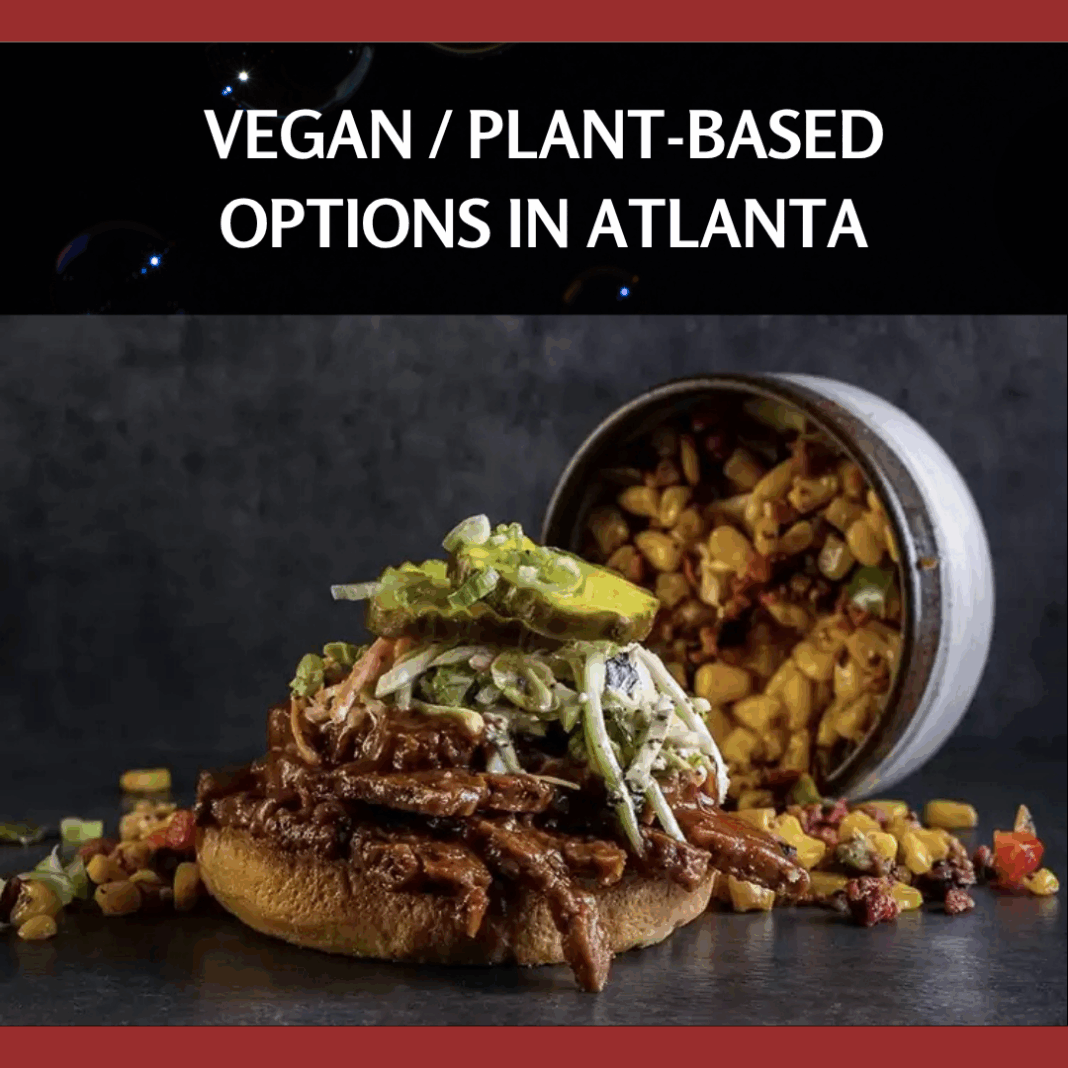The culinary landscape has been… infiltrated. Once upon a time, a menu simply listed “vegetarian options.” Now? We’re drowning in a sea of “vegan,” “plant-based,” “meatless,” “dairy-free,” and enough labels to make your head spin faster than a blender full of kale. Welcome to the era of Vegan / Plant-Based Options, where suddenly everyone is a botanist and your steak dinner is viewed with the same disdain as a flip phone.
Let’s be honest. For some of you, this is a lifestyle choice rooted in genuine ethical or health concerns. You’re avoiding animal products for reasons you’ve actually thought about. I respect that. But for others? It feels a bit like trading in your sensible sedan for a flashy electric car just to signal your… progressive values. The commitment level often seems about as deep as a puddle after a light sprinkle.
Vegan / Plant-Based Options in food and drink
We’re about to wade through the world of Vegan / Plant-Based Options in food and drink. From the genuinely innovative creations to the suspiciously meat-mimicking concoctions, we’ll cast a slightly skeptical eye on the offerings. Because let’s face it, not all plant-based burgers are created equal, and sometimes that “dairy-free cheese” tastes suspiciously like solidified sadness.
This isn’t a crusade against vegetables, mind you. A well-prepared plant-based meal can be quite… palatable. But the sheer volume of options, the often-exaggerated health claims, and the pervasive greenwashing require a discerning palate and a healthy dose of cynicism. We’ll explore the good, the bad, and the frankly bizarre of the Vegan / Plant-Based Options universe, helping you navigate this leafy jungle without falling for the marketing fluff.
So, grab your organic, locally sourced beverage of choice (probably something green), and let’s dissect this whole plant-based phenomenon with the critical eye it so richly deserves. Because in a world obsessed with trends, it pays to be a discerning consumer, even when it comes to what’s on your plate.
The Rise of the Leafy Revolution: Why Everything is Suddenly “Plant-Based”
The culinary world has undergone a seismic shift. Suddenly, menus are overflowing with Vegan / Plant-Based Options that promise health, sustainability, and perhaps even a halo of moral superiority. But what’s driving this green surge? Several factors are at play, some more substantial than others.
The Health Halo: Vegetables as the New Messiah
For decades, we were told to eat our vegetables. Now, the narrative has amplified. Plant-based eating is often presented as the ultimate path to wellness, a cure-all for everything from heart disease to the common cold. While there’s certainly merit to incorporating more plants into your diet, the almost messianic fervor surrounding it deserves a raised eyebrow. Not every “plant-based” processed patty is a health food, folks.
Ethical Considerations: Saving the Planet, One Tofu Scramble at a Time
The environmental and ethical arguments for reducing or eliminating animal products are powerful and resonate with many. Concerns about factory farming, climate change, and animal welfare have undoubtedly fueled the demand for Vegan / Plant-Based Options. For some, it’s a deeply held conviction; for others, it’s a convenient talking point at dinner parties.
The “Cool” Factor: Plant-Based as a Lifestyle Statement
Let’s not underestimate the power of trends. Being “plant-based” has become… fashionable. It’s a way to signal your awareness, your progressive values, and your commitment to a certain lifestyle. Suddenly, everyone from celebrities to your neighbor’s dog walker is touting the benefits of their plant-powered journey.
The Innovation Boom: Food Science Gone Green
The food industry has responded to this demand with a flurry of innovation. We now have plant-based burgers that “bleed,” dairy-free cheeses that… sort of melt, and enough meat substitutes to confuse a carnivore. The ingenuity is often impressive, even if the taste sometimes leaves something to be desired.
The Accessibility Surge: Once Niche, Now Mainstream
What was once relegated to specialty health food stores is now readily available in mainstream supermarkets and on restaurant menus. This increased accessibility has undoubtedly contributed to the widespread adoption of Vegan / Plant-Based Options.
So, the rise of the leafy revolution is a complex interplay of health consciousness, ethical concerns, trend adoption, food science innovation, and increased accessibility. Discerning the genuine motivations from the marketing hype is crucial for navigating this increasingly green culinary landscape.
The Vegan / Plant-Based Lexicon: Decoding the Dietary Double-Speak
Navigating the world of Vegan / Plant-Based Options often feels like learning a new language. Let’s decode some of the key terms you’ll encounter:
Vegan: The Strict Adherent
Veganism, at its core, is a philosophy and way of living that seeks to exclude—as far as is possible and practicable—all forms of exploitation of, and cruelty to, animals for food,1 clothing, or any other purpose. In dietary terms, this means absolutely no animal products: no meat, poultry, fish, dairy, eggs, or even honey for the purists.
Plant-Based: The Flexible Friend?
“Plant-based” can be a more ambiguous term. While often used interchangeably with vegan, it can sometimes imply a diet primarily focused on whole, unprocessed plant foods, with the possibility of occasionally including small amounts of animal products. This flexibility can be appealing to those looking to reduce their animal consumption without the strictures of veganism. However, it can also be a marketing loophole.
Meatless: The Straightforward Substitute
“Meatless” is usually pretty clear: no animal flesh. This often applies to specific dishes or products, like meatless burgers or meatless meatballs. It doesn’t necessarily exclude dairy or eggs.
Dairy-Free: The Lactose Liberator
“Dairy-free” specifically means the absence of milk and milk-derived products. This is crucial for those with lactose intolerance or dairy allergies, but a dairy-free product can still contain animal products like eggs or gelatin.
Egg-Free: The Poultry Passer-By
“Egg-free” indicates the absence of eggs and egg-derived ingredients. Like dairy-free, it doesn’t necessarily mean the product is vegan, as it could still contain dairy or other animal products.
Cruelty-Free: Beyond the Plate
While not strictly a dietary term, “cruelty-free” is often seen in the vegan and plant-based space. It refers to products (like cosmetics or household cleaners) that have not been tested on animals.
The key takeaway here is that not all these terms are synonymous. A “plant-based” burger might be vegan, or it might contain egg whites as a binder. A “dairy-free” ice cream could be made with cashews (vegan) or egg yolks (not vegan). As a discerning consumer, you need to read the ingredient labels, folks. Don’t just rely on the catchy marketing terms.
The Plant-Based Plate: A Culinary Landscape of Innovation (and Imitation)
The world of Vegan / Plant-Based Options in food is a fascinating mix of genuinely creative cuisine and products designed to mimic their animal-based counterparts. Let’s take a look at some common categories:
The Meat Mimickers: The Quest for the Convincing Substitute
From soy-based burgers of yesteryear to the “bleeding” beet-based patties of today, the quest to create a plant-based meat substitute that truly satisfies the carnivorous craving is ongoing. Some have come surprisingly close in texture and even flavor, while others… well, let’s just say they taste like seasoned cardboard.
The Dairy Departures: Milks, Cheeses, and More
The dairy aisle has been revolutionized by an array of plant-based milks (almond, soy, oat, coconut, etc.) and an ever-expanding selection of dairy-free cheeses, yogurts, and ice creams. The quality varies wildly. Some plant-based milks are genuinely delicious and versatile, while some dairy-free cheeses struggle with meltability and flavor.
The Egg Excluders: Binders and Beyond
Replacing eggs in baking and cooking presents a unique challenge. Innovations include using flaxseed “eggs,” chia seed “eggs,” and various commercial egg replacers. The results can range from surprisingly successful to a slightly… gummy texture.
The Standalone Stars: Celebrating Vegetables in Their Own Right
Beyond imitation, many talented chefs are creating incredible Vegan / Plant-Based Options that celebrate the natural flavors and textures of vegetables, grains, and legumes without trying to make them taste like meat or dairy. Think vibrant curries, hearty lentil stews, and innovative salads that go far beyond a pile of limp lettuce. This is often where the most genuinely delicious and satisfying plant-based meals are found.
The Processed Paradox: Not All Plant-Based is Healthy
It’s crucial to remember that just because something is labeled “vegan” or “plant-based” doesn’t automatically make it a health food. The market is flooded with processed vegan snacks, candies, and convenience foods that are high in sugar, salt, and unhealthy fats. As always, reading the nutritional information is paramount.
The world of Vegan / Plant-Based Options offers a spectrum of choices, from highly processed imitations to genuinely innovative and healthy dishes. A discerning consumer needs to navigate this landscape with both curiosity and a critical eye.
Navigating the Plant-Based Beverage Bonanza: From Nut Milks to Vegan Wines
The drink menu has also gone green. Here’s a quick rundown of the plant-based beverage landscape:
The Milk Alternatives: A Sea of Seeds and Nuts
Oat milk has become the darling of the dairy-free latte, but the options are seemingly endless: almond, soy, coconut, cashew, rice, hemp… each with its own texture and flavor profile. Your choice often depends on personal preference and how it interacts with your coffee or cereal.
Vegan Wines and Beers: Not All Alcohol is Created Equal
Surprisingly, not all wines and beers are vegan. Some use animal-derived fining agents (like isinglass from fish bladders or gelatin). However, the market for certified vegan wines and beers is growing, with many producers opting for plant-based alternatives.
Plant-Based Cocktails: Creativity Unleashed
Cocktail culture has embraced plant-based ingredients with enthusiasm. Think innovative concoctions using fruit purees, vegetable juices, and non-dairy alternatives like coconut cream.
The Green Smoothies: A Verdant Vortex of Nutrients (and Sometimes, Regret)
The ubiquitous green smoothie. Often touted as a health elixir, it can be a great way to pack in nutrients… or a murky concoction of questionable ingredients that tastes vaguely of lawn clippings. Buyer (and blender) beware.
The beverage world offers a wide array of Vegan / Plant-Based Options, from everyday staples to more adventurous concoctions. As with food, reading labels and being mindful of ingredients is key.
The Bottom Line: Navigating the Green Hype with a Discerning Palate
The world of Vegan / Plant-Based Options is here to stay, and it continues to evolve at a rapid pace. While the motivations behind this culinary shift are varied, and the quality of products and dishes can be inconsistent, there’s no denying the increased accessibility and innovation in this space.
As a discerning individual, your approach to Vegan / Plant-Based Options should be one of informed curiosity and healthy skepticism. Don’t fall for the marketing hype or the perceived moral superiority that sometimes accompanies this lifestyle. Read the ingredient labels, try things for yourself, and prioritize taste and nutritional value over trendy labels.
A well-executed plant-based meal can be a delicious and satisfying experience. But let’s not pretend that every meat substitute is a culinary masterpiece or that every “dairy-free” alternative is a guilt-free indulgence. Approach the greenwashing with a critical eye, trust your own palate, and remember that ultimately, what you choose to put on your plate is a personal decision, regardless of the prevailing trends.
Now, if you want more unfiltered takes on the trends shaping our world, from the food we eat to the choices we make, you know where to find me. Head over to my Instagram for a dose of reality in a visually digestible format. Join the conversation on Facebook and let’s dissect these societal shifts with a critical eye. For a perspective that cuts through the noise, subscribe to the YouTube channel. And for a comprehensive look at navigating the complexities of modern life, check out the website. Stay informed, stay discerning, and for goodness sake, taste your food before you declare yourself a “plant-based enthusiast.”





